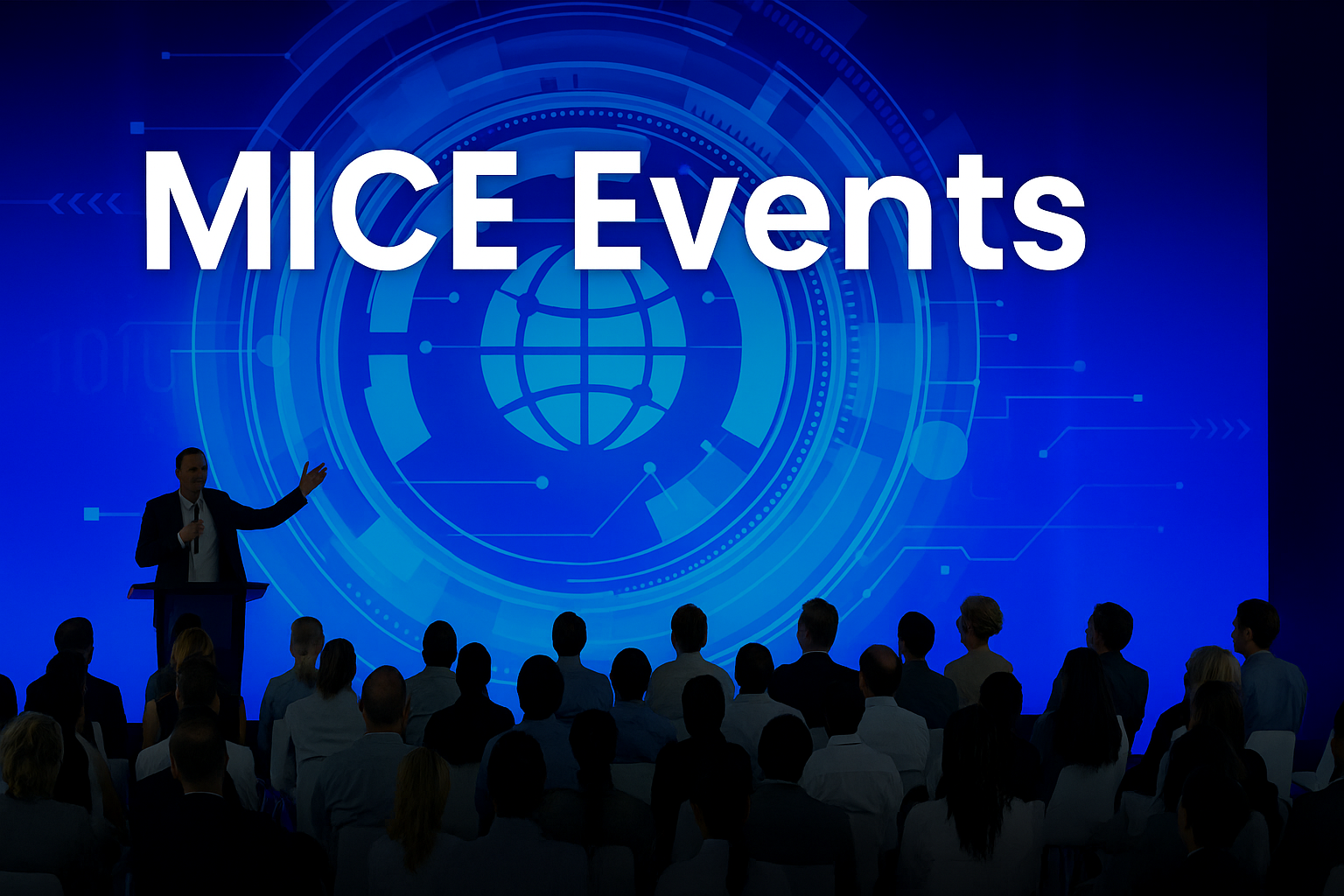In the fast-paced world of business and global networking, MICE events have become a powerful catalyst for growth, collaboration, and innovation. But what exactly are MICE events, and why are they so important?
MICE stands for Meetings, Incentives, Conferences, and Exhibitions. Together, these four categories form the foundation of the global business events industry. Whether you're an event planner, business leader, or tourism board, understanding the different types of MICE events is essential for effective MICE event management.
Let’s break down each component and explore its subtypes, relevance, and how technology in MICE events is enhancing their impact.
1. Meetings
Meetings are the most straightforward and commonly held type of MICE event. They typically involve a group of people gathering to discuss business strategies, review performance, solve problems, or brainstorm ideas.
Subtypes of Meetings:
- Board Meetings: Held at the executive level to make high-level decisions.
- Sales Meetings: Focused on targets, performance, and market updates.
- Team Meetings: Regular check-ins among departments or project teams.
- Annual General Meetings (AGMs): Larger corporate gatherings are often open to shareholders.
- Training Seminars: Designed to educate employees or clients.
In MICE event management, meetings can be small and intimate or large and multi-session. Modern technology in MICE events such as virtual conferencing, hybrid setups, and real-time collaboration tools have completely transformed the way meetings are conducted across borders.
2. Incentives
Incentive events are a motivational tool used by businesses to reward employees, partners, or clients. Unlike meetings or conferences, incentive events are non-business in content but critical in driving performance and loyalty.
Subtypes of Incentive Events:
- Reward Trips: All-expenses-paid travel to exotic destinations for top performers.
- Team-Building Retreats: Activities aimed at building stronger interdepartmental relationships.
- Experience-Based Events: VIP access to concerts, festivals, or sports events.
- Luxury Cruises or Adventures: Personalized travel experiences with exclusive amenities.
These events are carefully planned and curated, making MICE event management a key success factor. The goal is to create memorable experiences that motivate teams. With the rise of technology in MICE events, organizers can personalize these trips with apps, digital itineraries, and AI-based preference tracking.
3. Conferences
Conferences are large, structured events focused on sharing knowledge, networking, and exploring new ideas. They bring together industry leaders, professionals, and even customers to discuss trends, innovation, and future strategies.
Types of Conferences:
- Academic Conferences:Researchers and educators presenting findings.
- Business Conferences: Company leaders discussing markets, goals, and strategies.
- Tech/Product Conferences: Launching new innovations or software tools.
- Customer Conferences: Organized by companies for their clients or users.
A good conference often includes keynote sessions, breakout rooms, panels, and workshops. And today, technology in MICE events plays a huge role — from virtual networking lounges to live Q&A, mobile apps, smart badges, and AI matchmaking tools.
If you’re hosting or attending a conference, you’ll quickly see why it’s a core part of any successful meeting incentive conference exhibition strategy.
4. Exhibitions
Exhibitions are where businesses showcase their latest products, services, or innovations. These are high-energy events packed with booths, demos, and one-on-one conversations with potential buyers or partners.
Types of Exhibitions:
- Trade Shows: Business-to-business (B2B) events where industries connect.
- Consumer Shows: Open to the public for direct sales and brand exposure.
- Product Launch Exhibitions: Dedicated to showing off new releases.
- Pop-up Exhibitions: Smaller, themed events for marketing and brand experiences.
A well-run MICE exhibition can lead to new partnerships, media attention, and major sales. MICE event management here includes booth designs, lead capture tools, layout planning, and crowd flow management. With tech like RFID badges, QR check-ins, and digital floor maps, exhibitions are becoming smarter and more interactive.
How Technology Is Powering MICE Events
Across all types of MICE events, technology is no longer a luxury — it’s a necessity. Here’s how technology in MICE events is redefining the industry:
- Event Apps: Provide real-time updates, session bookings, and networking tools.
- Facial Recognition & QR Check-ins: Fast-track registration and event access.
- Virtual/Hybrid Platforms: Allow participation from global attendees, increasing reach.
- AI-Powered Matchmaking: Connects attendees with shared interests automatically.
- Data Analytics: Helps organizers measure success and refine future strategies.
Whether you’re hosting a small team meeting or a large MICE exhibition, smart tech can improve engagement, increase operational efficiency, and deliver better ROI.
The Importance of MICE Events for Global Business
MICE events are more than just organized gatherings. They are platforms for:
- Building relationships
- Driving innovation
- Fostering loyalty
- Accelerating growth
From a tourism perspective, MICE events bring significant economic value to host cities by attracting international participants and generating local business. That’s why governments and city planners are investing heavily in infrastructure to support meeting incentive conference exhibition formats.
For companies, successful MICE event management boosts brand visibility, strengthens partnerships, and aligns teams with business goals.
Final Thoughts
Understanding the types of MICE events, Meetings, Incentives, Conferences, and Exhibitions, is crucial if you want to harness their full potential. Each type serves a unique purpose, and when executed well, they contribute massively to a business’s growth and global reach.
Whether you're organizing a leadership summit, planning an award trip, or managing a MICE exhibition, blending strong strategy with modern technology in MICE events ensures success.

